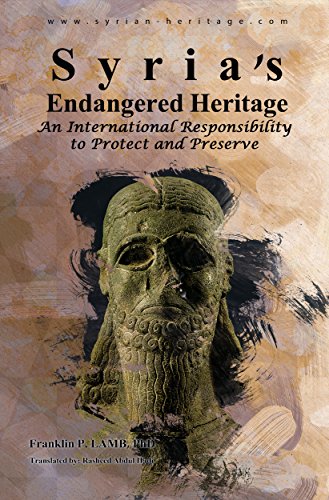Yarmouk Palestinian Camp, Damascus
At the Palestine Embassy in Beirut recently, a young lady showed this observer
a video of a gentleman in Yarmouk camp in Damascus. The video showed the man killing
and eating a cat. Food ran out in Yarmouk weeks ago, and nearly 18,000 refugees
are facing death from starvation and other conflict-related causes. This siege
has been ongoing since July 2013, and it has become viciously lethal.
The Palestinians living here have been targeted. They are part of the quarter
million people--children, women, and men--trapped and dying from hunger and
illness all across Syria as a direct, predictable result of using the siege of
civilians as a weapon of war. It isn't just Yarmouk. Throughout Syria,
neighborhoods are being blockaded. Residents are running out of supplies,
unable to get basic services. Among the Syrian towns under siege at this time are
Nubul and Al-Zahraa in Aleppo province, the old city of Homs, and the towns of
Eastern Ghouta, Daraya and Moadamiyet al-Sham in rural Damascus.
Truly a crisis of horrifying proportions, yet perhaps nowhere is this more the
case than in the systematic starvation of Palestinian refugees in Yarmouk camp,
where this past week eight
more Palestinians died from malnutrition. These include 80-year-old, Jamil
al-Qurabi, 40-year-old, Hasan Shihabi, and a 50-year-old woman named Noor. In
addition, 10-year-old Mahmoud al-Sabbagh and two 19-year-olds--Majid Imad Awad
and Ziad al-Naji--were killed while protesting the blockade of the camp. And
reports have also emerged that two other men, Muhammad Ibrahim Dhahi and Hasan
Younis Nofal, were tortured and killed.
Based on conversations with Palestinians who were able to literally crawl out of the area from sewage pipes on the South side of Yarmouk, more than 100 people, as of 1/15/14, have died from starvation in the past four months--that is since mid-August 2013. Other causes of death have included three dozen cases of death by dehydration, and also malnutrition (differing slightly from starvation in that it pertains to inadequate nutrition rather than a total absence of ingestible substances) (you still die from it, though). More than three dozen miscarriages have also resulted from the food shortages, while infants have succumbed due to lack of milk. There have also been deaths by hypothermia for lack of fuel, and recently I spoke with a gentleman whose niece, an infant girl, died of suffocation in her neonatal intensive care unit due to a power cut.
In January of 2013 the UN estimated that one million people needed urgent humanitarian assistance. Today, twelve months later, the figure is nearly ten million. That assessment is from UN Secretary General Ban Ki-moon, who spoke last week at yet another aid conference. A commission of inquiry set up by the UN Human Rights Council has found war crimes, crimes against humanity, and gross human rights violations committed in Syria on a daily basis. According to its conclusion, "All sides in the conflict have shown a total disregard for their responsibilities under the international humanitarian and human rights law."
International law relevant to situations of this nature was created specifically to stop the targeting of civilians. Its principles, standards and rules demand that such targeting cease, and they call for the prosecution of perpetrators irrespective of which side in the civil war in Syria they may support. A civil war is an armed conflict located on the territory of one state, between the armed forces of the State and dissident armed forces or other organized armed groups under responsible command. These are groups that maintain control over part of the land, or that are able to carry out armed operations of a continuous and coordinated nature. The applicable statutes include Common Article 3 of Protocol II (1977) the Geneva Conventions of 1949. Whether it is regime armed forces and their allies, or anti-government militia, both are legally bound to respect the Geneva Conventions and must lift the siege on Yarmouk. If not, they risk prosecution at an existing international court or at a possible Special Tribunal for Syria being contemplated among some at the United Nations.
The following is from Additional Protocol II to the Geneva Conventions of 12 August 1949: Part IV: Civilian Population:
Article 13.PROTECTION OF THE CIVILIAN POPULATION.
1. The civilian population and individual civilians shall enjoy general
protection against the dangers arising from military operations.
To give effect to this protection, the following rules shall be observed in all
circumstances.
2. The civilian population as such, as well as individual civilians, shall not
be the object of attack. Acts or threats of violence the primary purpose of
which is to spread terror among the civilian population are prohibited.
3. Civilians shall enjoy the protection afforded by this Part, unless and for
such time as they take a direct part in hostilities.
Article 14. PROTECTION OF OBJECTS INDISPENSABLE TO THE SURVIVAL OF THE CIVILIAN
POPULATION. Starvation of civilians as a method of combat is prohibited. It is
therefore prohibited to attack, destroy, remove or render useless, for that
purpose, objects indispensable to the survival of the civilian population, such
as food stuffs, agricultural areas for the production of foodstuffs, crops,
livestock, drinking water installations and supplies and irrigation works.
Article 15. PROTECTION OF WORKS AND INSTALLATIONS CONTAINING DANGEROUS FORCES.
Works or installations containing dangerous forces, namely dams, dykes and
nuclear electrical generating stations, shall not be made the object of attack,
even where these objects are military objectives, if such attack may cause the
release of dangerous forces and consequent severe losses among the civilian
population.
(Note: You can view every article as one long page if you sign up as an Advocate Member, or higher).





